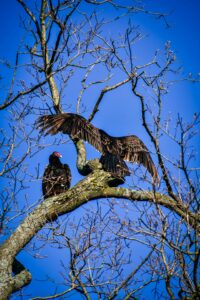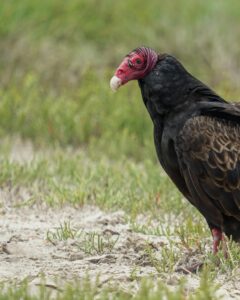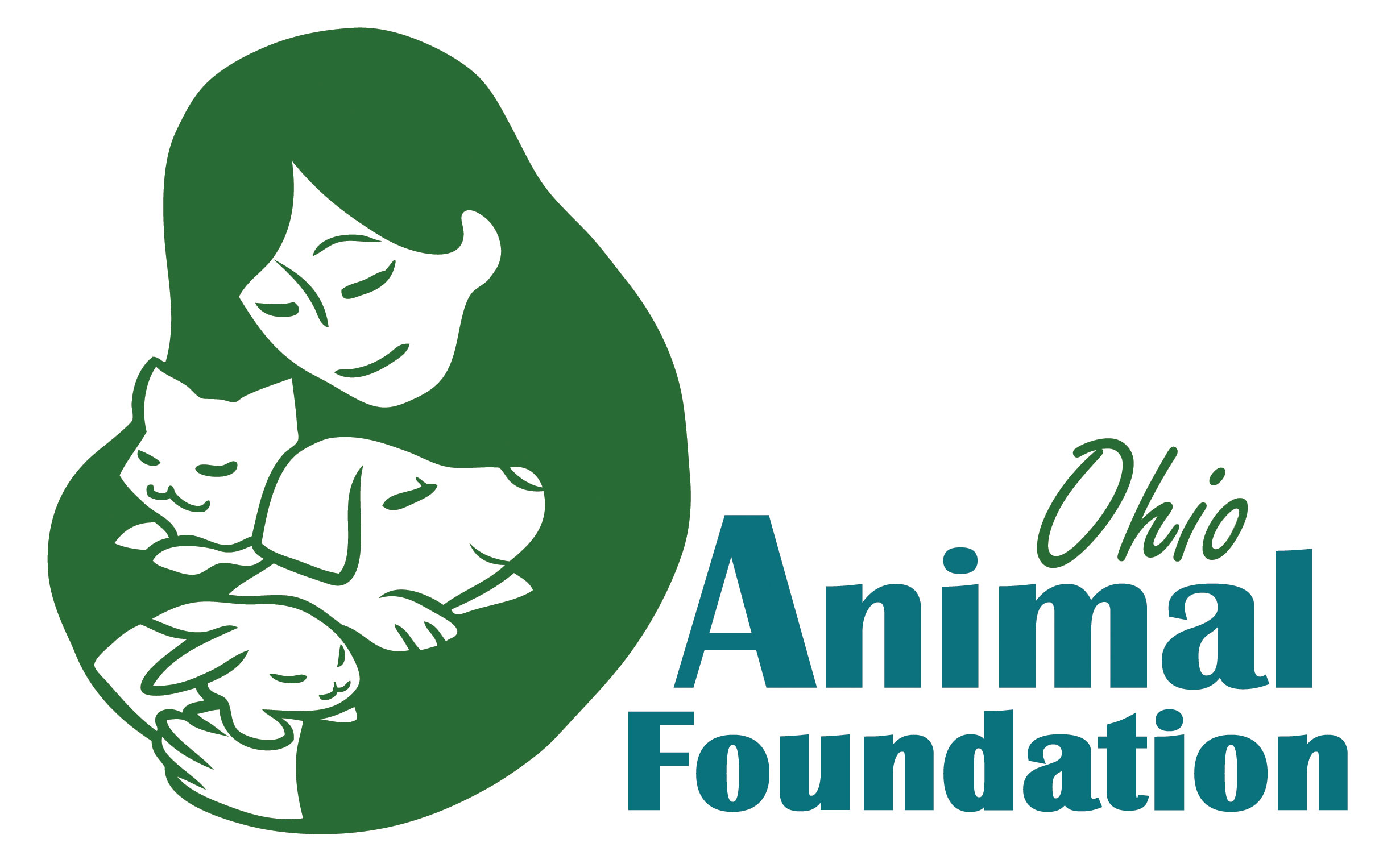
Two turkey vultures rest on a bare tree branch, one spreading its wings in the sunlight.
Research has revealed the misunderstood role this environmental custodian has in helping ecosystems stay healthy by clearing decaying animal remains and stopping the spread of disease. A quote from the International Vulture Awareness Day website sheds light on the services vultures graciously provide us: “This natural waste management is both free and environmentally beneficial, providing economic advantages to livestock farmers by reducing the need for artificial disposal methods such as transport to incineration plants, thus minimizing related insurance payouts and greenhouse gas emissions.”
More cool facts about vultures:
- One of their most unique characteristics, their featherless head, actually has a hidden secret. This area on their head is very useful for keeping them cool in the hot weather. In addition to helping them cool off, vultures have been known to tuck their heads into their bodies when they need to warm up.
- Another fun fact about vultures is how diverse they are. There are 16 species of vultures labeled Old World because they are from Asia, Africa, and Europe, followed by 7 species here in the Americas.
- In Ohio, the turkey and black vulture can be seen near highways and parks from Maumee Bay State Park to Cuyahoga Valley National Park. Turkey vultures are more common, especially during their breeding season from March to May, although in cooler areas they can be seen until August.
- Local Ohio species of vultures can both live anywhere from 15 to 20 years and have a wingspan of 1.8-2.3 m, which they use to soar across columns of warm air to sense food from far away (Nielsen, 2025).
Jacob Irgens-Møller Nielsen, a Danish ecologist and birder, says, “If you want to spot these birds, start by driving along rural backroads, keeping an eye on fence posts and tall trees where they gather. Early mornings and late afternoons are excellent times, as vultures often perch in groups or settle for the night in roosting spots.” Vultures are unsung heroes, but they do not always get the help they deserve, especially as they face multiple challenges in recent decades.

A close-up of a turkey vulture on the ground, showing its red head and hooked beak.
According to the International Vulture Awareness Day (IVAD) website, IVAD aims to help spread awareness about the threats facing vultures, such as direct and indirect poisoning, illegal killing, electrocutions, or collisions with power lines, and the way their interesting diets make our homes and parks even healthier. IVAD has reported that in 2024 there were 119 vulture awareness events across 39 counties, which is great progress!
International Vulture Awareness Day started in 2006 from the collective efforts of different conservation organizations across the globe. Originating from the Endangered Wildlife Trust in South Africa and the Hawk Conservancy Trust in England, this movement has become a great example of hope for vulture conservation.
You can celebrate these important birds by participating in the upcoming Scavenger Day hosted by Great Parks of Hamilton County at Farbach-Werner Nature Preserve on September 6, 2025, from 12 – 3 pm EDT at 3455 Poole Road, Cincinnati, OH, to celebrate International Vulture Awareness Day with an afternoon of scavenging fun! At this unique event, you can “take part in a meet-and-greet with Curly the black vulture, hunt for treasures along the trail, color a masterpiece, and discover interesting facts about birds of prey.”
IVAD is helping to shatter the myths and celebrate the wonder of vultures while taking action to protect these vital birds before it’s too late. Join them annually on the first Saturday of September to celebrate the unsung heroes that keep our natural world healthy. If you want to learn more fascinating facts about vultures and ways to help them in your community, visit the IVAD website to read more.
~ Zachary Hagen
